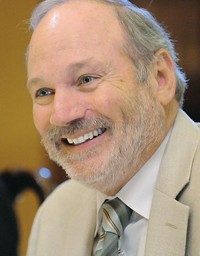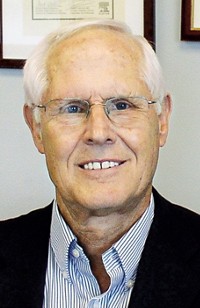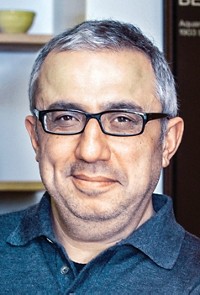Advertisement
Grab your lab coat. Let's get started
Welcome!
Welcome!
Create an account below to get 6 C&EN articles per month, receive newsletters and more - all free.
It seems this is your first time logging in online. Please enter the following information to continue.
As an ACS member you automatically get access to this site. All we need is few more details to create your reading experience.
Not you? Sign in with a different account.
Not you? Sign in with a different account.
ERROR 1
ERROR 1
ERROR 2
ERROR 2
ERROR 2
ERROR 2
ERROR 2
Password and Confirm password must match.
If you have an ACS member number, please enter it here so we can link this account to your membership. (optional)
ERROR 2
ACS values your privacy. By submitting your information, you are gaining access to C&EN and subscribing to our weekly newsletter. We use the information you provide to make your reading experience better, and we will never sell your data to third party members.
Synthesis
Mohammad Movassaghi: Arthur C. Cope Scholar Awardee
Recipients are honored for contributions of major significance to chemistry
by Bethany Halford
March 9, 2009
| A version of this story appeared in
Volume 87, Issue 10

Mohammad (Mo) Movassaghi doesn't just remember the course that inspired him to choose a career in organic chemistry; he even recalls the molecule that first piqued his curiosity. Although he always knew he intended to pursue the study of science, Movassaghi says that his second semester of undergraduate organic chemistry at the University of California, Berkeley, truly sparked his interest in the field, specifically the lecture on the chemotherapeutic agent mitomycin C.
"Here was this beautiful small molecule that had such powerful reactivity associated with it," Movassaghi says. "It had the ability to cleave a DNA strand with this very elegant chemistry, and that highlighted for me the power of small organic molecules."
Since that illuminating lecture, Movassaghi has had an impressive career in organic synthesis. He began by doing undergraduate research with Paul A. Bartlett at UC Berkeley. Graduate work with Andrew G. Myers followed, first at California Institute of Technology, and later at Harvard University. He continued his postdoctoral studies at Harvard with Eric N. Jacobsen as a Damon Runyon postdoctoral fellow. Movassaghi then moved to the other side of Cambridge to take an academic position at Massachusetts Institute of Technology, where he's currently an associate professor.
Movassaghi's dual research focus in total synthesis and the development of synthetic methodology is being honored with an Arthur C. Cope Scholar Award "for his creative syntheses of biologically interesting alkaloids and for the development of new and general routes to nitrogen-containing heterocycles."
"Mo has described beautiful syntheses of highly complex alkaloids such as (–)-calycanthine, (+)-chimoanthine, and (+)-folicanthine, the galbulimima and myrmicarin alkaloids, and the nonalkaloid illudin natural products, important agents in advanced trials for human cancer therapy," Myers notes. "These works are characterized by a striking degree of imagination and inventiveness with regard to synthetic approach and for the novelty of the chemistry employed in their execution."
Jacobsen adds that Movassaghi's work demonstrates "an extraordinary sense about how to incorporate biomimetic strategies to achieve structural complexity in highly creative ways." Many of the alkaloid syntheses to come out of Movassaghi's group, Jacobsen says, "are breathtakingly efficient and elegant. These are targets that have been addressed by some of the great minds in synthetic organic chemistry over the years, but Movassaghi's syntheses are dramatically shorter and more impressive."
Movasssaghi's methodology research is equally impressive, notes his MIT colleague Stephen L. Buchwald. Movassaghi has developed methodology for preparing highly substituted pyridines, pyrimidines, quinolines, quinazolines, and related heterocycles.
"Not only is this a 'wow' reaction," Buchwald points out, "but it is particularly novel that it can utilize the double bond of an aromatic group as if it were simply the C=C bond of an alkene." Movassaghi's other methodology projects include the invention of a formal [3+3] cycloaddition of in situ-formed enamines with cycloalkenones.
"What we're excited about is being able to create molecular complexity as rapidly as possible and with as much use of the inherent chemistry of reactive intermediates," Movassaghi says. "In many ways what we do is try to predict as well as we can what possible intermediates could be in the biosynthetic pathways leading to these really beautiful molecules."
When Movassaghi isn't pursuing chemical challenges, chances are good he's pursuing athletic ones. He's an avid tennis player and often runs with his wife, MIT chemistry professor Sarah E. O'Connor. "She's an outstanding scientist and an inspiration to me," he says. "It's demoralizing running with her," he adds playfully. "She's a very good runner, and when you run uphill, she just takes off. Every time that happens, it reminds me of how she tackles difficult problems. The more difficult the problem, the more she pushes."
That sort of tenacity is something Movassaghi says he tries to emulate as well as encourage in his students when they face tough chemical hurdles. "Once you've identified a problem, do everything possible to address the question you're interested in," he advises. "Don't hold back."





Join the conversation
Contact the reporter
Submit a Letter to the Editor for publication
Engage with us on Twitter